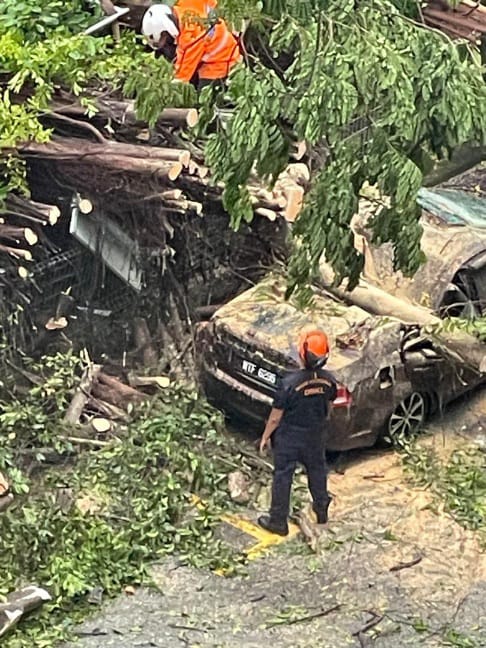
by Dr Rahim Said
It was a chaotic afternoon in Desa Sri Hartamas on April 21 when a massive tree came crashing down on several parked cars.
The fallen giant blocked traffic, triggering a snarl stretching from the junction near Sekolah Kebangsaan Desa Seri Hartamas all the way to the road leading to Segambut Dalam intersection.
Fortunately, no one was injured, and the affected cars were unoccupied at the time. Fire and rescue personnel arrived swiftly, seen in action cutting away the thick branches and sawing through the trunk to reopen the road.
“This could have ended very badly,” said a resident who witnessed the incident from her window at Kiara Hills . “It’s a wake-up call for all of us.”
This incident is yet another reminder of the freak weather patterns becoming all too common in our city. Climate change, no longer a distant threat, is uprooting our lives. Storms have become more intense, sudden, and destructive—often with little warning.
As we speak passionately about greening our urban spaces, we tend to overlook a simple truth: trees need care too.
The fallen tree was likely over 30 years old, planted during the early development of Desa Sri Hartamas. For decades, it stood tall, offering shade, clean air, and quiet companionship to the neighbourhood. But even the strongest trees weaken with age and neglect.
Urban greenery isn’t just about planting new trees—it’s about sustaining the ones we already have. Regular maintenance such as pruning, soil checks, and monitoring root health could prevent tragedies like this.
“These trees are part of our community,” said another resident. “But like anything that lives, they need looking after.”
While DBKL holds responsibility for public trees, residents also have a role to play. A greener city isn’t just about aesthetics—it’s about safety, sustainability, and shared responsibility.
Going green is not a weekend campaign or a pretty Instagram post. It’s a long-term, living commitment.
WE